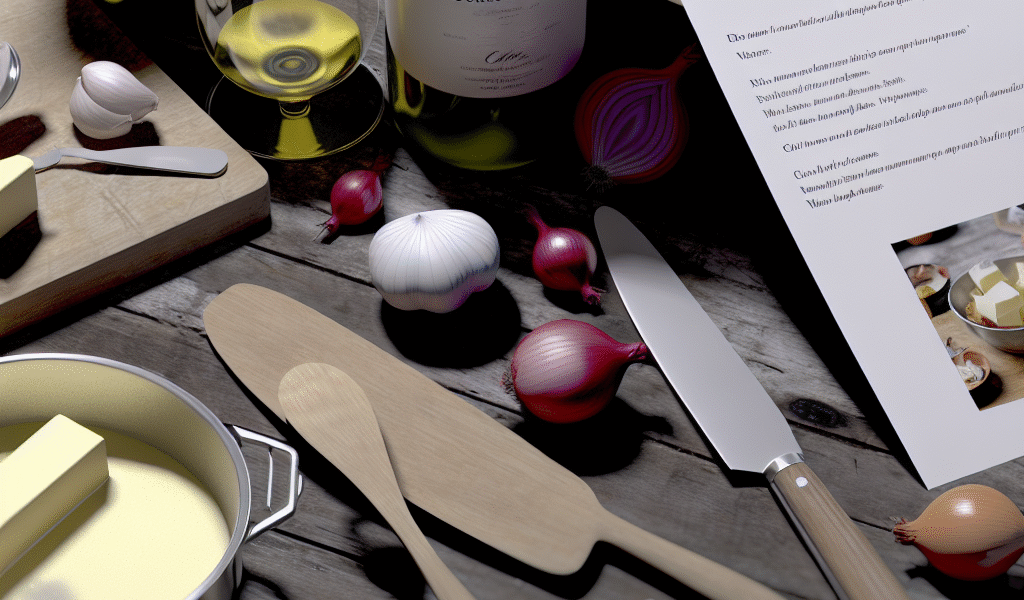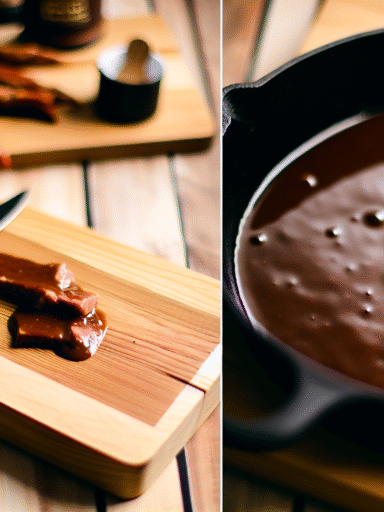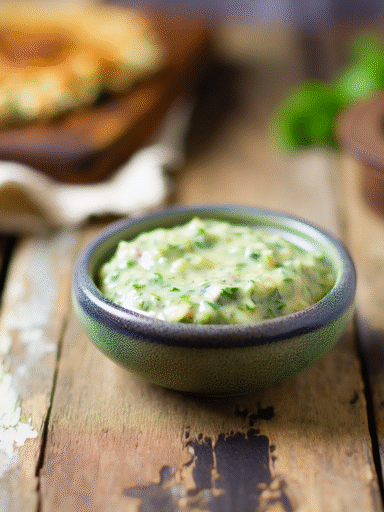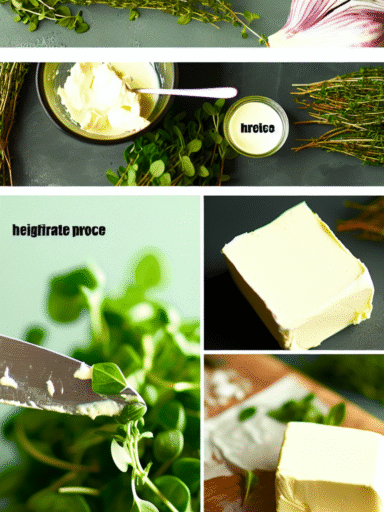Beurre Blanc
If you’ve ever wondered how to elevate a simple fish or vegetable dish to elegant dinner-party status, Beurre Blanc is your new best friend. This classic French butter sauce brings a silky, tangy richness that’s surprisingly simple to master. Stick with me, and I’ll guide you through its creamy goodness and show you how to make it right in your own kitchen.
Tags / Categories
- Flavor Profile: Buttery, tangy, creamy
- Main Ingredients: Butter, white wine, shallots, vinegar
- Region: Loire Valley, France
- Usage: Seafood, vegetables, chicken, dressings
Quick Info Box
- Prep Time: 5 minutes
- Cook Time: 10 minutes
- Total Time: 15 minutes
- Difficulty Level: Intermediate
- Yield: About 1 cup (enough for 4 servings)
Ingredients List
- 1/3 cup dry white wine (Sauvignon Blanc is great)
- 2 tablespoons white wine vinegar (or Champagne vinegar)
- 2 tablespoons finely chopped shallots
- 1/2 pound (2 sticks) cold unsalted butter, cut into small cubes
- Salt, to taste
- Freshly ground white pepper, to taste
- Optional: A squeeze of fresh lemon juice or a pinch of fresh herbs (tarragon, chives)
The Art of Crafting Beurre Blanc
Making beurre blanc is like orchestrating a delicate dance between acidity and butter. You start by gently simmering white wine, vinegar, and shallots until the liquid reduces to a syrupy glaze. This step is crucial because it concentrates all the bright, tangy flavors that’ll balance richness later.
Once the reduction is ready, the magic begins: the butter goes in, slowly and steadily, piece by piece, to create that luscious, creamy emulsion. This is the trickiest part—too fast and the sauce might break, too slow and your patience gets tested. No worries if it’s a bit chunky at first; whisk vigorously and keep calm, you’re almost there.
Season with salt and white pepper to keep the delicate color and add that subtle heat. For a little extra zing, a whisper of lemon juice or a sprinkle of fresh herbs transforms beurre blanc from classic to personal signature sauce. Your kitchen will smell amazing right about now—just wait until you drizzle it over your plate!
Serving Suggestions & Perfect Pairings
Beurre blanc is a superstar with seafood—think pan-seared scallops, poached salmon, or grilled sole. It’s also brilliant with steamed asparagus, roasted new potatoes, or even a simply prepared grilled chicken breast. The sauce’s brightness beautifully cuts through fattier dishes too, making it versatile beyond just fish.
If you’re feeling adventurous, use it as a drizzle over roasted vegetables or toss it lightly with fresh pasta for a luxurious touch. The possibilities are endless as long as you lean into subtle flavors that complement but don’t overpower.
Origin & History: The French Classic Born in the Loire Valley
Beurre blanc, which literally means “white butter” in French, hails from the Loire Valley region and was invented in the mid-20th century by the chef Clémence Lefeuvre. Legend says she forgot to add cream to a butter sauce, but the result was so delicious that it became a culinary staple. This sauce embodies French finesse—simple ingredients combined with careful technique that transforms everyday dishes into something elegant and timeless.
Variations & Substitutions
- Wine Substitutes: If white wine isn’t on hand, try dry vermouth or light champagne for a slightly different twist.
- Vinegar Options: Apple cider vinegar or lemon juice can be swapped in if you want a softer acid profile.
- Dairy-Free Version: For a non-dairy version, you can replace butter with vegan butter alternatives, but know it won’t achieve quite the same velvety texture.
- Flavor Twists: Add a touch of minced garlic or a bay leaf during the reduction stage for extra aroma.
Storage & Make-Ahead Tips
Beurre blanc is best served fresh and warm, but if you need to prepare ahead, store it in an airtight container in the refrigerator for up to 2 days. To reheat, gently warm it in a double boiler, whisking constantly to reincorporate the butter and avoid separation. Avoid microwave reheating—it tends to make the butter break apart.
This sauce doesn’t freeze well due to its delicate emulsion, so plan on making it fresh whenever possible. If you want to prep the reduction base beforehand, store that separately and finish with butter right before serving.
Nutritional Information (per 1/4 cup serving)
- Calories: Approximately 220
- Fat: 24g (mostly from butter)
- Carbohydrates: 1g
- Protein: 0.2g
- Sodium: 60mg (variable depending on added salt)
Related Sauces / Try Next
- Hollandaise Sauce – Another buttery classic with an egg base.
- Beurre Noisette (Brown Butter Sauce) – For a nutty, rich twist on butter sauces.
- Béarnaise Sauce – Similar base with herbs and tarragon for a punchy finish.
FAQ
- Why did my beurre blanc break (separate)?
- This usually happens if the butter is added too quickly or the sauce gets too hot. Adding butter gradually over low heat while whisking constantly helps maintain the emulsion.
- Can I use salted butter?
- It’s better to use unsalted butter so you can control the saltiness. But if salted is all you have, reduce or skip the added salt.
- What if I don’t have shallots on hand?
- Finely minced onion can work in a pinch, but shallots provide a milder, more elegant flavor that’s hard to replace.
Mastering beurre blanc might seem intimidating at first, but with a bit of patience, it becomes second nature. This lush, tangy butter sauce is a true kitchen win — it effortlessly enhances dishes and brings a touch of French charm right to your table. So grab that cold butter, open a bottle of white wine, and get whisking. Your next meal just got a serious upgrade!



